Paleontologists have made a remarkable discovery in Mongolia’s Gobi Desert: a rare nest of baby giant hadrosaurs. Found in an area known as the “Dragon’s Tomb” due to its rich fossil deposits, this nest sheds light on prehistoric life and behavior.
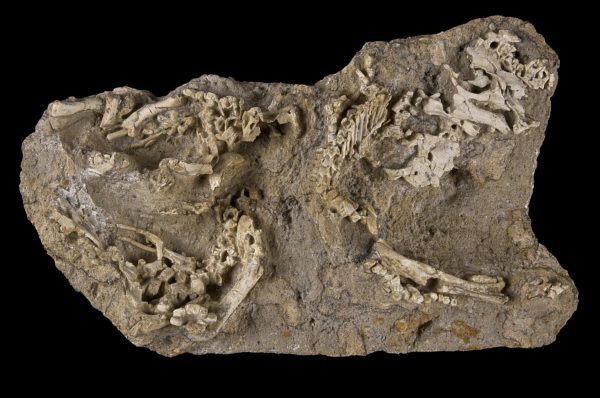
The findings, detailed by Leonard Dewaele of Ghent University and colleagues in PLOS ONE, mark the first description of embryonic remains of the species Saurolophus angustirostris.
While S. angustirostris fossils are common in the rocks of the Nemegt Formation, this discovery is significant as it provides insight into the early stages of these dinosaurs’ lives. The nest, housing 3-4 individuals, was found alongside fragments of eggshells, a rare but valuable occurrence in paleontology.
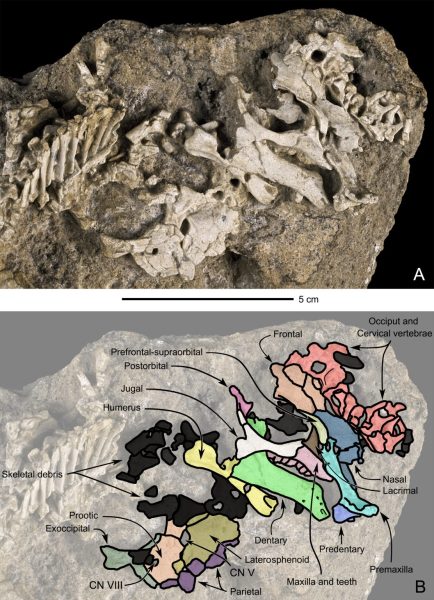
Several clues suggest that these dinosaurs were perinatal specimens. The size of their skulls, only about 5% the length of adult S. angustirostris skulls, indicates their youth. Additionally, microscopic examination reveals porous, incompletely ossified bones, characteristic of very young animals.
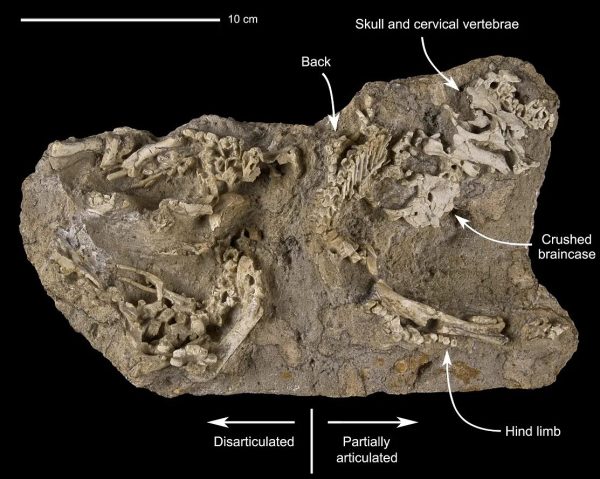
Although these fossils lack the characteristic head crest of adult S. angustirostris, the presence of unfused skull bones suggests that this feature had not yet developed at this early stage.
Lead author Leonard Dewaele notes, “The poorly developed crest in Saurolophus babies provides evidence of ontogenetic crest growth within the Saurolophini tribe.”
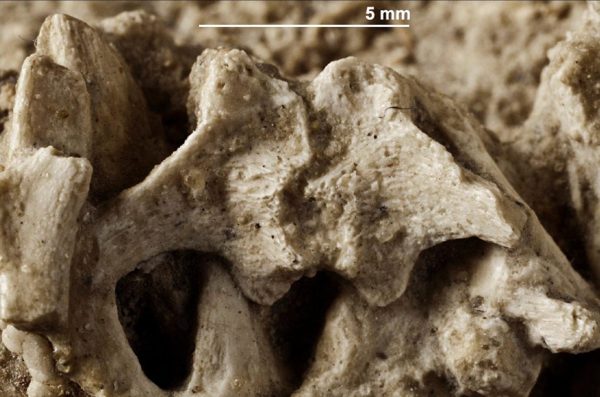
This discovery offers a rare glimpse into the growth and development of features in these extinct animals.
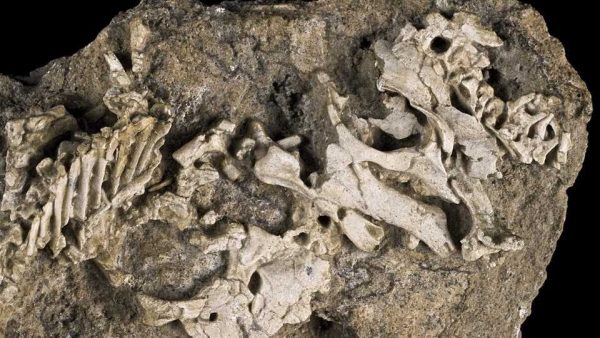
Geological evidence suggests that the nest was laid along a river bank, with the dinosaurs likely dying shortly after birth and becoming buried by the river’s movements. While the exact cause of their death remains uncertain, this find provides valuable insights into the life cycle of these ancient creatures.





